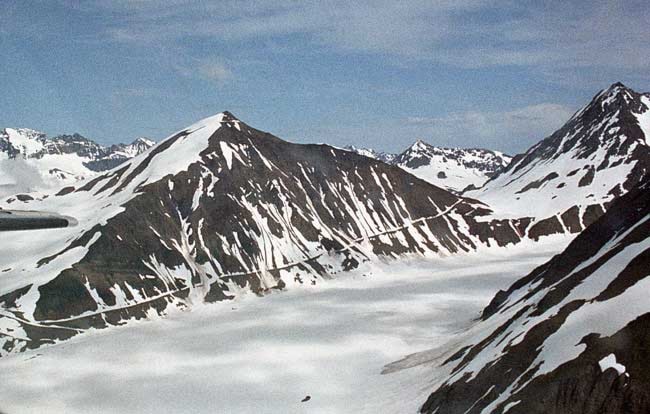Premier Darrell Pasloski’s doom-and-gloom prediction that preserving the Peel Watershed would bankrupt the territory is based on one big assumption.
It’s that the push to protect a vast swath of northeast Yukon is similar to the Windy Craggy saga that played out in British Columbia nearly two decades ago.
But there are big problems with this comparison. Put them all together, and it’s hard to escape the conclusion that the premier is vastly overstating the cost of protecting the Peel.
Most importantly, Windy Craggy was well on its way to becoming a massive copper mine when the BC government encircled it with Tatshenshini-Alsek Park in 1993.
This led to the mine company, Geddes Resources, receiving a payout of $29 million. The province spent another $138 million to help build another mine elsewhere.
RELATED:Read all of our election coverage.
But no mineral play in the Peel is anywhere near as advanced as Windy Craggy was at the time. “Therein lies the distinction,” said Richard Schwindt, professor emeritus of economics at Simon Fraser University.
He should know. Schwindt’s the guy the BC government hired to craft a compensation deal for Windy Craggy.
The Peel’s most-lauded deposit is Chevron’s massive Crest iron deposit along the Snake River.
But the Crest deposit doesn’t have proven reserves or a modern feasibility study. Both are needed for a company to make a strong case for being paid foregone profits, said Schwindt.
And Chevron hasn’t explored Crest since the early 1960s. It’s unlikely that the company would be compensated for that work done that long ago, and even if it were, that would cost less than $500,000.
There are other important differences between Windy Craggy and Crest. To be viable, Crest needs a 1,000-kilometre rail line stretching to Haines, Alaska. Cost estimates for this stretch upwards of $11 billion.
Chevron once hoped governments would foot much of the bill. But, as both Canada and the United States retrench after the global financial crisis, this now seems extremely unlikely to happen any time soon.
Power is another big problem for Crest. Being so far from the Yukon’s grid, and from potential hydroelectric projects, the only realistic electricity source is an extremely dirty one: a coal-fired plant, fed by the Bonnet Plume’s coal seams.
Schwindt doesn’t buy the line advanced by the NDP and conservationists that no compensation is owed to mineral exploration companies with properties frozen by a ban on building roads.
Their claims may not, strictly speaking, be expropriated, but the effect is the same.
But exploration outfits ought to only be compensated for their documented costs, up to a relatively short cutoff point, said Schwindt. He recommended that the BC government only pay exploration companies for work done in the preceding five years.
It would cost $40 million to reimburse mining exploration companies for their expenditures in the watershed from 2005 to 2008, when the bulk of staking was done.
That’s far less than the “hundreds of millions” of dollars that Pasloski has predicted. But it’s still a lot of money.
It would cost far less if the territory set an earlier cut-off date, or if payments are discounted for companies that rushed in to stake claims after the planning process started.
And, as conservationists and opposition parties note, cash payments aren’t the only solution, although Schwindt sees it as the tidiest.
When the Fishing Branch and Tombstone territorial parks were created, companies with claims were negotiated with on an individual basis.
Some companies simply gave up their claims. Others swapped their claims for credit for exploration work elsewhere. Some probably received cash - how much isn’t publicly known.
None fought acrimonious court battles.
The cost of Windy Craggy itself is sometimes overstated, said Schwindt. The total deal was worth $167 million, but much of the money went to the construction of publicly owned infrastructure like power lines and roads, as well as job training.
“When you look at it, it wasn’t that the government got held up,” said Schwindt.
In the end, this payout wasn’t based on Schwindt’s plan. “There was no really clear explanation as to how the government had come up with the amount of money it had come up with,” he said.
There’s a lesson to be learned, both from Windy Craggy and from the current Peel dispute, said Schwindt. That’s the need for clear rules set out for compensation for mineral claims that are either expropriated or otherwise stranded by protected land.
If such rules were in place before the Peel planning began, they may have prevented the staking rush that ensued.
“Make it clear so that capitalists can predict what’s going to happen in certain events. Then you don’t get into this sort of mess, where people flock to the problem.”
But rewarding exploration outfits for more than their costs would send the wrong message, said Schwindt.
“If you insure homes in a floodplain for floods above the cost of the creation of the dwelling, people will flock to the floodplain,” he said.
“If people believe that government is going to start compensating on speculation of that mineral reserve, it’s the floodplain story.”
There’s nearly 9,000 mineral claims in the Peel. Much of this is of the Yukon Party government’s own making, when it ignored recommendations to ban staking in the area once the planning process started. Predictably, stakers rushed in.
Now, Pasloski is pointing to these claims as one of the big reasons why the Peel shouldn’t be protected.
Contact John Thompson at
johnt@yukon-news.com.
